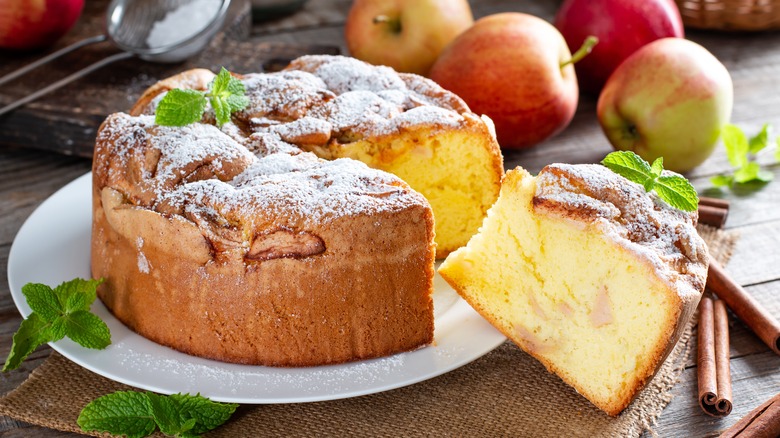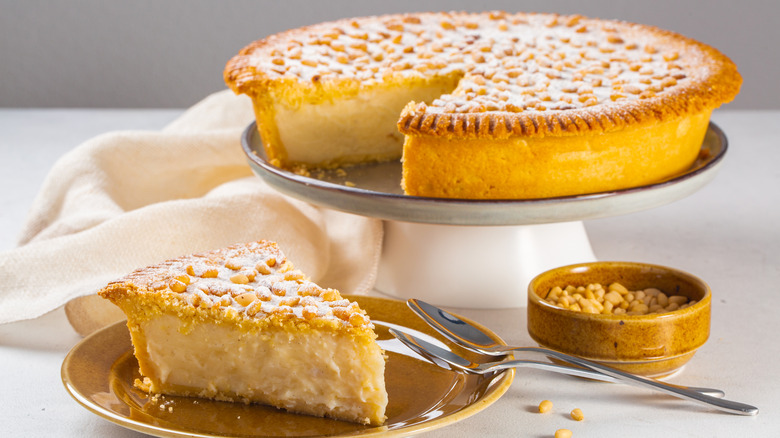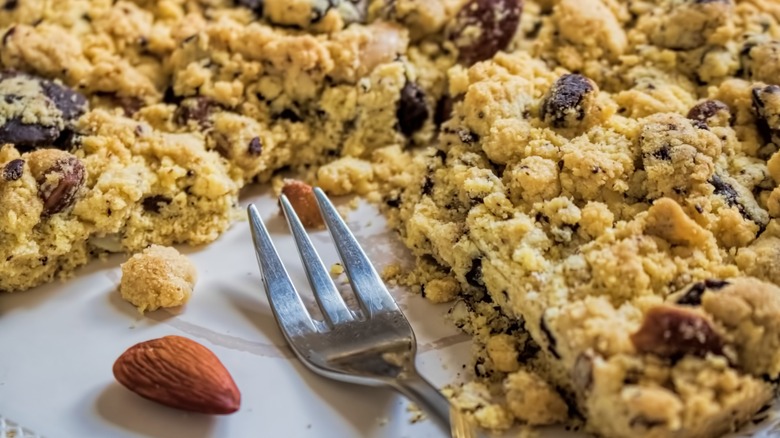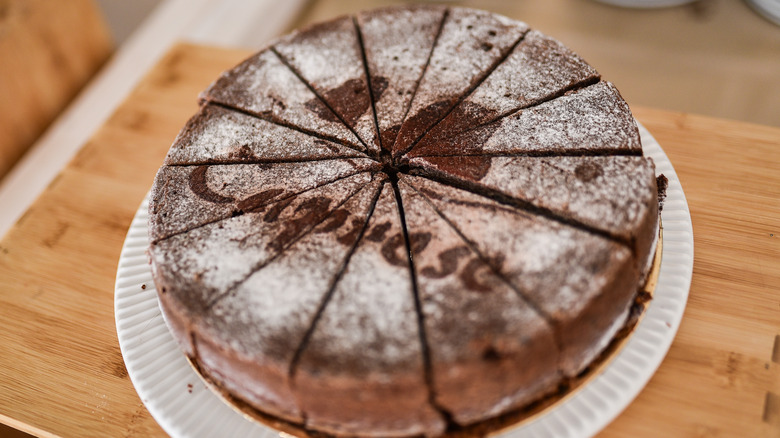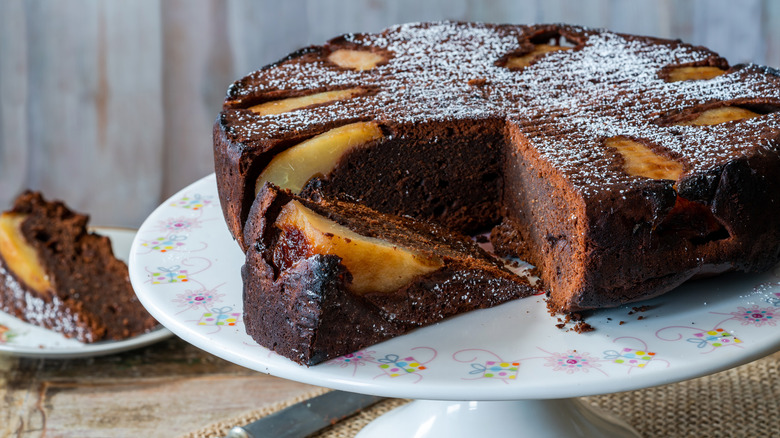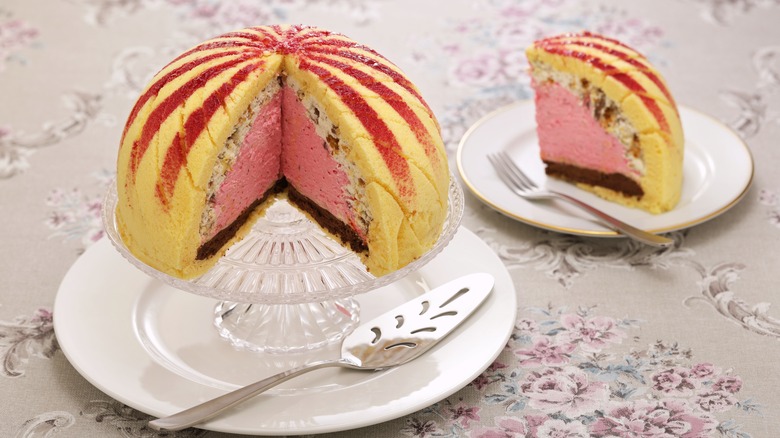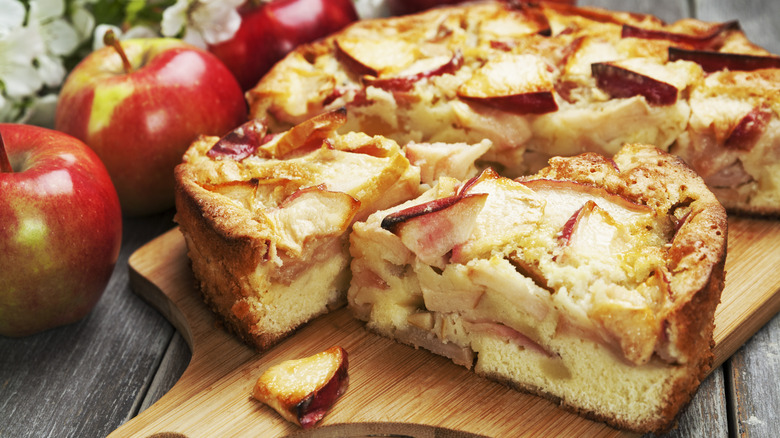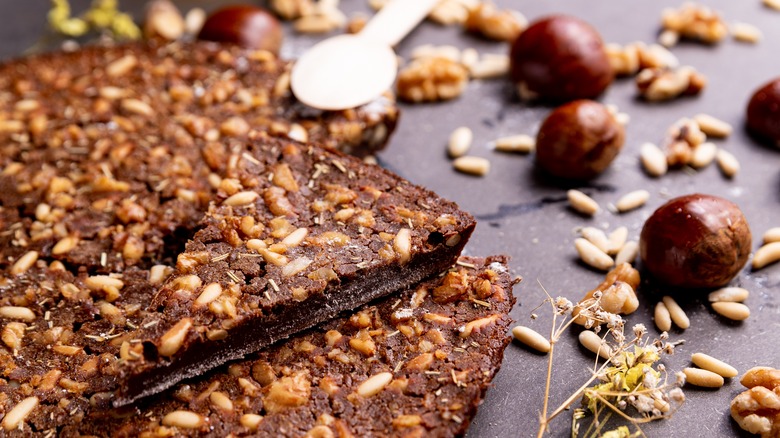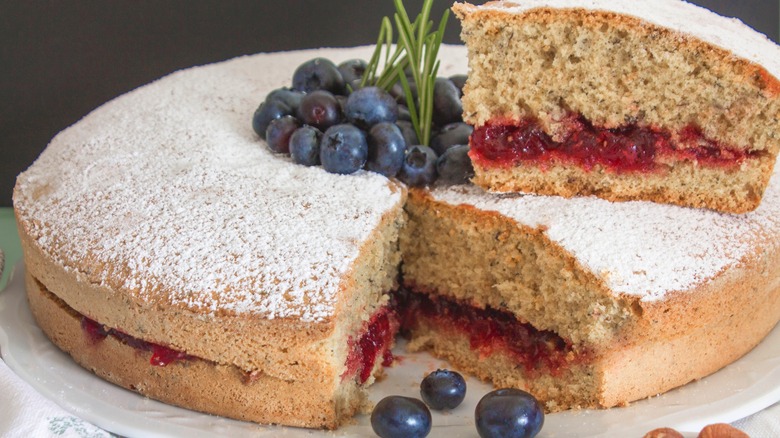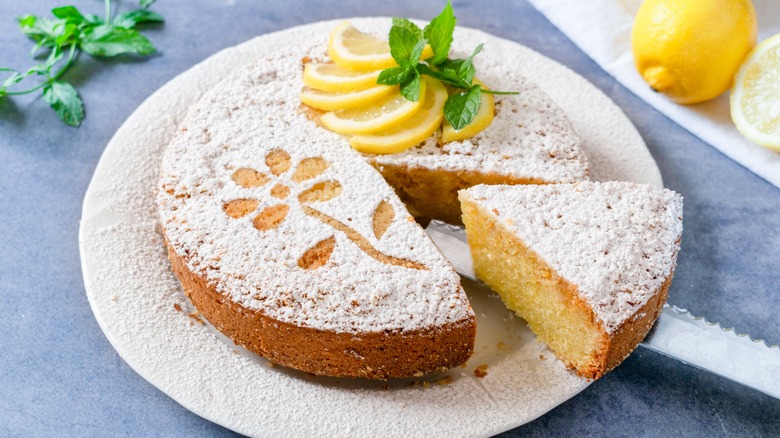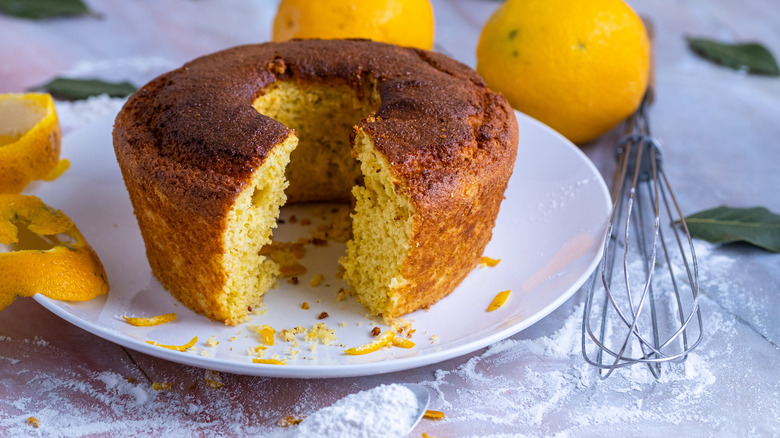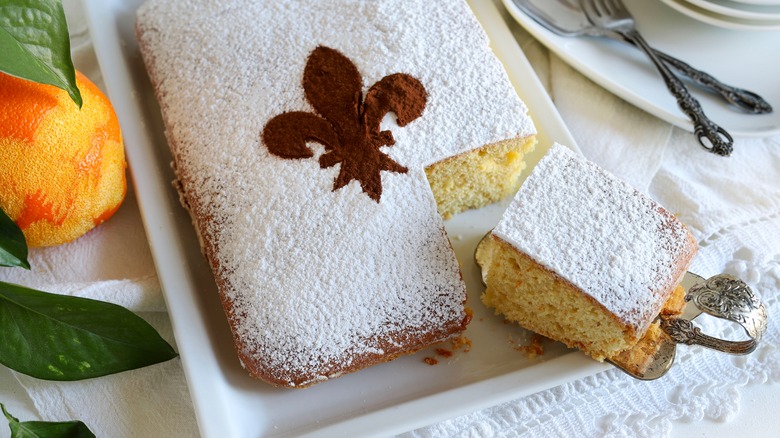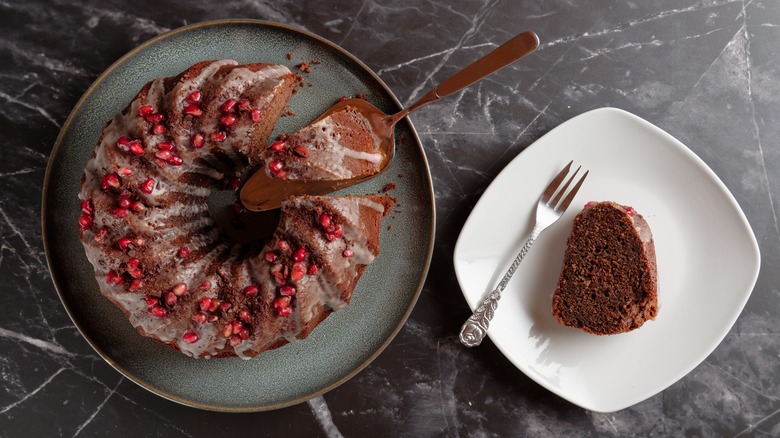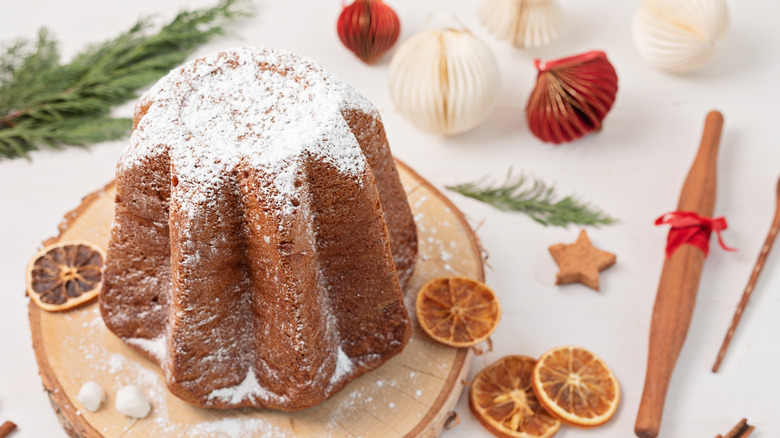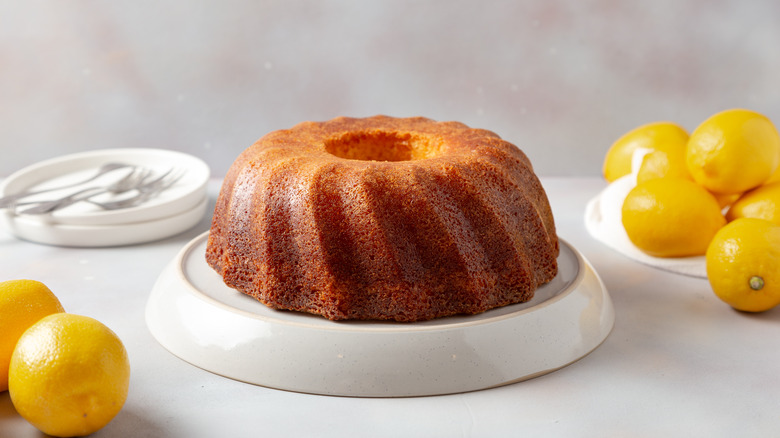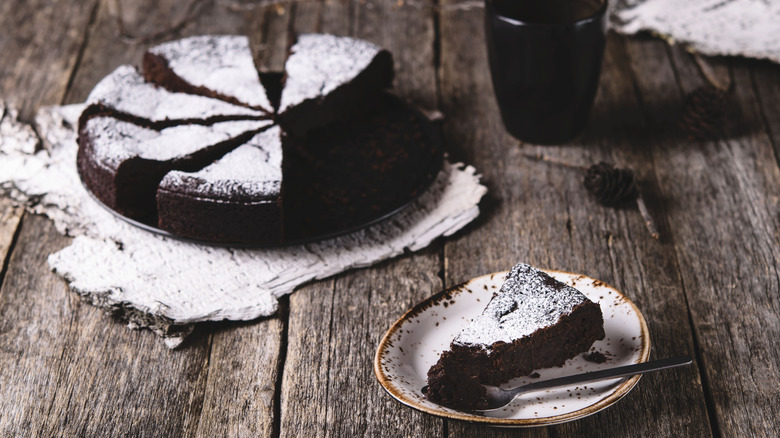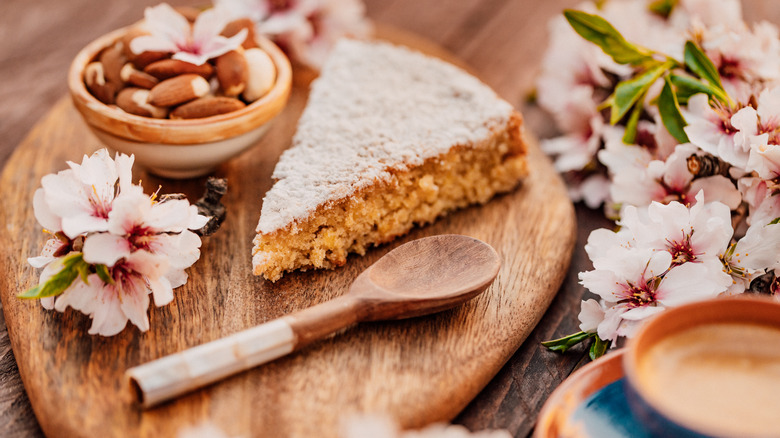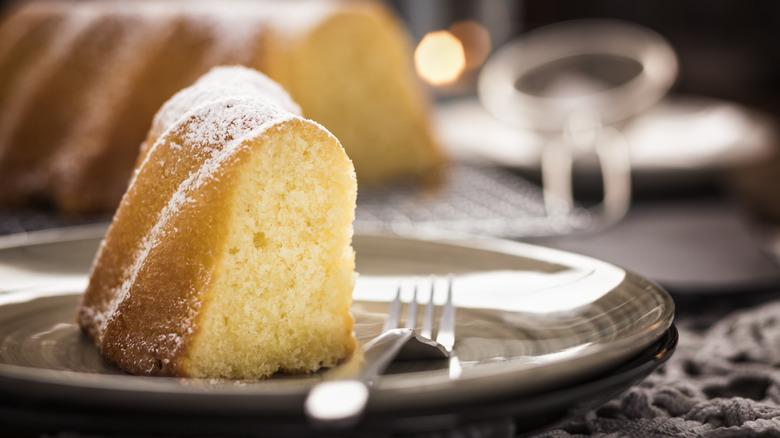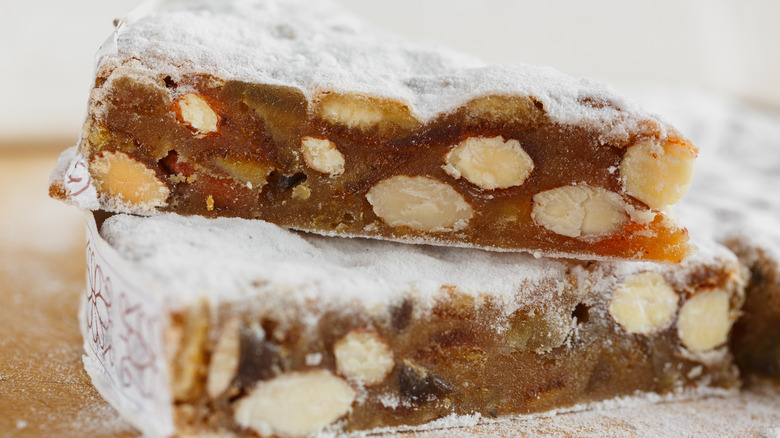20 Italian Cakes You Need To Try At Least Once
Italy might be best known for its sweeping history, superlative wine culture, and seductive pasta dishes, but the country-shaped-like-a-boot — which has long been a destination of choice for foodies — also has a fair reputation for stellar desserts. Of course we're all familiar with the classic crowd-favorites that are tiramisu, cannoli, and gelato. But if you're the type that only sticks to these tried-and-true favorites of Italian dessert, we're here to inform you that you're missing out on some truly scrumptious lesser-known Italian sweets. As it turns out, the land of wine and pasta is also home to some breathtakingly delicious traditional cakes.
Thanks in part to its centuries-long history, Italian cuisine in general is highly regionalized, meaning that over time each region has developed and perfected their own recipes and methods of production–some of which are now protected by the Italian government under the Protected Designation of Origin label. These differences in region and tradition are especially easy to see (and enjoy) in our list of 20 Italian cakes you need to try at least once in your life, from ultra-fudgy torta Barozzi to the semi-frozen delight that is zuccotto. The best part? You don't even have to jump on a plane to give them a try — many are easy enough to be made at home, and others can be found at any self-respecting Italian bakery, market, or restaurant.
Torta della nonna
If you consider yourself even a little bit of an Italian food connoisseur, chances are you've already heard of or even devoured a few slices of this classic Italian cake. Torta della nonna translates to "grandmother's cake," and it really does taste like something only an authentic Italian grandma could come up with. It's a sweet and silky pastry cake that typically involves a filling of lemon- and vanilla-flavored custard and a topping of pine nuts and/or powdered sugar, with a few regional variations allowed.
The dessert supposedly originated in Tuscany, specifically either the city of Florence or the city of Arezzo, though its popularity has somewhat obscured the specifics of its origin. Over the past decades, the popularity of this favored Tuscan treat has exploded, to the point that it can now be found all over Italy and, in fact, all over the world. The melt-in-your-mouth texture and unique flavor (thank you, pine nuts; you're not just for pesto!) work together to make torta della nonna more of an experience than just another cake recipe.
Torta sbrisolona
If texture is your thing, you're going to want to pay attention to the next Italian cake we have to introduce to you. Meet the torta sbrisolona, a classic cake from Mantua in northern Italy that involves all the typical ingredients — flour, butter, eggs, and sugar — but seasoned with the subtle flavors of almond, vanilla, and lemon zest. Of course, the taste is amazing — this dessert wouldn't be on our list if it were otherwise. But what makes torta sbrisolona so special is the crumbly, crunchy, cookie-like texture that will undoubtedly drive fans of crunchy sweets mad with cravings for a second or third piece.
The dessert's name comes from the word "brisa," which in the local Mantuan dialect means "crumbs." It's a fitting name, as the crumbly cake is traditionally meant to be broken and eaten with the hands rather than sliced with a knife. Locals tend to pair this sweet with a strong digestivo such as grappa or a sweet dessert wine like vin santo, though we suspect it would be just as appetizing with a tall glass of milk.
Cassata
If you happen to live in an area with lots of Sicilian influence on the local food, then lucky you! You're probably already at least a little familiar with the magical, flavor-laden treat that is cassata. For the unawares, cassata is a traditional Sicilian sponge cake with origins that can be traced back to the 10th century. The dessert is a multi-layered masterpiece involving spongey slabs of cake soaked in rum and/or fruit juices between cushions of cinnamon-laced sweetened ricotta — trust us, it's all but impossible to dislike this cake.
Despite its Sicilian origins, cassata has become a wildly popular dessert all across Italy and the world, often served around Easter time as part of the holiday's celebrations. And though the recipe is inextricably tied to Sicily, the dessert's true origin story is still debated to this day and makes for an intriguing slice of history.
Torta Caprese
When you hear the word "Caprese," chances are that it conjures up images of juicy tomatoes, fresh mozzarella, and aromatic basil (all of which come together perfectly in our chopped Caprese salad). But when it comes down to semantics, Caprese is simply a designation that, in Italian, means "of Capri." And while just as delicious as the refreshing insalata of a similar name, torta Caprese could not be any more different.
As you might have already guessed, torta Caprese originally hails from the island of Capri, where it allegedly originated (by accident, mind you) with an Italian chef called Carmine di Fiore. Supposedly, Chef Fiore forgot to add flour to his cake batter, which already contained plenty of bittersweet chocolate, butter, ground almonds, sugar, and eggs. The result was a flourless (and therefore gluten-free!) chocolate cake that chocoholics worldwide owe it to themselves to try.
Torta cioccolato è pere
When you think of pairing chocolate with fruit, your mind probably goes straight to classic combinations such as chocolate-covered strawberries (like these black and white-chocolate delights) or even chocolate-coated banana or orange slices. But we'd like to introduce you to the unconventional, yet no less appetizing, combination of chocolate and pears that you'll find in the classic Italian torta cioccolato è pere.
The recipe supposedly originated in Florence, though the exact details of its origin are scant. Thankfully, you won't need a history lesson to enjoy this mouthwatering chocolate cake that mixes chopped dark chocolate and whole chopped pears into its batter. Some recipes even layer the pear slices atop the cake for both aesthetic and enjoyment purposes.
Zuccotto
When it comes to desserts, ice cream makes everything better, right? At least, that's the spirit of this sweet, semi-frozen, Florentine treat known as zuccotto. The dish takes its name from the pumpkin-shaped mold traditionally used in making the cake —the name zuccotto even means "little pumpkin" in Italian!
The cake itself is usually flavored with a liqueur such as amaretto or alchermes, while the filling consists of sweetened ricotta and gelato, with optional additives like chocolate chunks, dried or candied fruit, or almonds. When finished baking, the zuccotto is usually stored in the freezer to preserve the gelato filling, and can be thawed just before serving. And thanks to the dessert's popularity, it likely won't require a long trip to Italy to sample its sweet, frozen goodness.
Torta di mele
Ah, apples. Whether you're seasoning them with clove, cinnamon, and ginger for the ultimate apple streusel experience or just familiarizing yourself with which popular type of apple is best for a certain recipe, it's clear that the classic fruits are no strangers to the realm of comforting desserts. This is certainly true for the classic Italian torta di mele, or apple cake, which will undoubtedly leave you feeling all cozy and nostalgic for those dreary autumn days.
Aside from the obvious stars of the show–the apples, of course–this cake features a subtle sweetness balanced with cinnamon and lemon juice. It's just as perfect paired with a steaming hot beverage or nothing at all! Either way, it's a must-try for all the apple lovers out there.
Castagnaccio
From classic pumpkin pie to fancy glazed cranberry bread, there really is no end to the number of scrumptious autumn desserts we've managed to dream up. Our next Italian cake to recommend falls into this category, though it doesn't exactly utilize all the stereotypical autumn ingredients.
Castagnaccio is a plain or subtly sweet cake from the Apennine region that is typically made from chestnut flour. Though other Italian regions with an excess of autumn chestnuts have created their own variations, a traditional castagnaccio also involves olive oil (for moisture), pine nuts (which blend nicely with the rich chestnut flavor), and raisins or other dried fruits. It can be served on its own, or with accompaniments like ricotta, honey, or a dessert wine like vin santo.
Torta di grano saraceno
In case you haven't heard, buckwheat is a thing, and though it can be an acquired taste in some recipes, it's more than capable of substantially elevating other dishes (like chocolate chip cookies) and can even be swapped in favor of all-purpose flour to make a recipe gluten-free. You see, despite its name, buckwheat is a completely separate grain from wheat and it happens to be the defining ingredient in torta di grano saraceno, which means "buckwheat cake" in Italian.
Traditionally, torta di grano saraceno is a sweet, spongy, layered cake from the Trentino area. The buckwheat flour and ground almonds give the cake a deeply nutty flavor, with just a hint of bitterness that most recipes balance out with a healthy layer of fruit jam (black currant or cranberry are both popular choices) stuffed between the cake layers.
Torta al limone
We could easily make the argument that lemons are pretty much the perfect fruit — after all, their refreshingly tart taste is just as delectable in lemonade, a tangy pasta dish, or sweet torta al limone. Lemons are the front-and-center ingredient in this particular cake, which is popular all across Italy, especially in the summer when the fresh lemons are plentiful.
The cake is pillowy soft with a subtle yet distinctive flavor that pairs best with lighter beverages — think tea instead of coffee. With a light dusting of powdered sugar on top, torta al limone makes for a great light dessert or midday snack. Due to its popularity, there are quite a few variations out there, including gluten-free and vegan versions that forgo the all-purpose flour and eggs in favor of simple olive oil.
Pan d'arancio
Citrus fruit lovers rejoice! There are more than a few Italian desserts that utilize fresh citrus juice, be it lemon or orange, but our next classic Italian cake actually uses whole oranges blended into its batter — juice, pulp, peel, and all. Pan d'arancio, meaning "orange bread" in Italian, is a traditional dessert that hails from Sicily, where oranges are a major agricultural export.
Besides the local oranges, the traditional recipe typically calls for almond flour, sugar, and olive oil, excluding other common ingredients like milk, eggs, and butter. The result is an intensely orange-flavored cake that is delicious and safe to be enjoyed by anyone, regardless of whether they're vegan, lactose-, or gluten-intolerant.
Schiacciata alla Fiorentina
The central Italian city of Florence has given us many things over the years — from the early work of Leonardo da Vinci to the meat masterpiece that is bistecca alla Fiorentina — but it's also given us more than a few delicious sweet treats. One that you'll be hard-pressed to miss around the Easter holiday is the famous schiacciata alla Fiorentina. This cake is large, flat, and almost always decorated with a dusting of powdered sugar and a giglio, otherwise known as a stylized fleur-de-lis, the symbol of Florence.
The flavor is distinct, yet subtle, coming from traditional ingredients like vanilla and orange peel, and the texture is full and fluffy. It pairs perfectly with a cup of strong coffee, dessert wine, or just a dollop of fresh whipped cream.
Torta alla melagrana
One of the beautiful things about Italian cuisine is its ability to make so many different (and mouthwatering) dishes with the simplest and sometimes unthought-of ingredients. Such is the case with torta alla melagrana, or in Italian, the pomegranate cake. It's a spongy, subtly-sweet cake that can be eaten any time of day — for a light breakfast, a midday snack, or a post-dinner sweet tooth. And as you might have guessed, its key ingredient is pomegranate juice, though it also borrows a delightful blend of flavors from the added butter, eggs, and lemon juice.
It's a surprisingly simple cake, but for pomegranate lovers especially, it's hard to beat. It's easiest to find in the fall and winter months when pomegranates are in peak season, but it can also be made at other times of the year thanks to the availability of bottled pomegranate juice!
Pandoro
You've likely already heard of the typical Italian Christmas bread known as panettone, but allow us to introduce you to its similarly popular holiday-time rival, pandoro. Its name, now slightly shortened, was originally "pan d'oro," which means "bread of gold" in Italian in reference to its beautiful golden color once out of the oven.
The cake is fluffy and smooth with a subtle sweetness brought out by a generous sprinkling of powdered sugar on top that is meant to be reminiscent of the snow-capped Italian Alps around Christmastime. It also has a distinctive shape, as it is traditionally baked in a tall, star-shaped mold. Though its origins go back centuries, the city of Verona claims this one as its own, thanks in large part to the innovations of Veronese pastry chef Domenico Melegatti.
Ciambella
Sometimes the sweet tooth calls for something rich and fudgy; other times, it wants something light and refreshing. Our next traditional Italian cake definitely falls into the latter category. Ciambella, a symbol of the Marche region of Italy, is a light, spongy cake made from all the traditional ingredients like flour, butter, eggs, sugar, milk, and vanilla, though some variations also add honey for a slight boost of sweetness.
The key to achieving the super-fluffy texture that makes it so popular in Italy is to gradually fold the milk into the batter of eggs and sugar until it reaches a frothy consistency. Regional variations also add the likes of mixed berries, oranges, hazelnuts, chocolate, and even pistachios.
Torta Barozzi
This one's for all the chocolate lovers out there. Torta Barozzi is the rich, fudgy, flourless chocolate cake that most chocoholics spend their nights dreaming about. It was originally conceived by Italian pastry chef Eugenio Gollini in 1897 in Vignola, and subsequently named after the famous Renaissance architect Giacomo Barozzi da Vignola. And while the most prominent flavor is obviously the dark chocolate involved, most versions also utilize rum, coffee, liqueurs, and/or crunchy almonds.
It's about as close to the perfect chocolate dessert as you can possibly get, but you can still kick it up a notch with a dollop of whipped cream, meringue, or even a very light drizzle of sweet balsamic glaze. However you prefer it, torta Barozzi definitely belongs on your dessert bucket list.
Torta di amaretti
In case you haven't noticed yet, many Italian desserts rely on almonds for a slight nuttiness and depth of flavor that make certain recipes so popular. Almonds, and their associated liqueur amaretto, are the star of the show when it comes to torta di amaretti, or amaretto cake. It has a chewy, almost crumbly texture and understated flavor that makes it a perfect match for that after-dinner coffee.
Some variations call for orange extract or chocolate, though the original list of ingredients is incredibly simple, and satisfying enough on its own. Many local recipes also call for crushed amaretti, or crunchy almond cookies, to be folded into the cake batter for the ultimate sweet almond experience.
Dolce di Amalfi
The Amalfi Coast is famous for an endless number of reasons, starting with its breathtaking vistas and continuing with its delectable lemon-centric recipes. Seriously, this particular region of Italy takes its lemons seriously, from their acclaimed limoncello to the beloved dolce di Amalfi. It's a sweet lemon and almond cake that has become so inextricably linked with the Amalfi Coast that they even share a name. And the hype isn't just for nothing — these things are downright irresistible.
The basic ingredients are pretty, well, basic: almond flour, whole lemons (juice, zest, and all), olive oil, and sugar. The result is a scrumptious dessert that could, arguably, qualify as healthy. (Olive oil is better than butter, right?) So feel free to treat yourself to a second slice when you have the chance.
Panforte di Siena
Next on our list of Italian cakes that you just have to try is probably the least cake-like of all of them. Panforte di Siena originated in the Tuscan city of Siena and dates back to at least the 13th century. The medieval recipe called for quite a bit of strong pepper which, thankfully, modern recipes tend to do without.
This is a flat, chewy dessert made by dissolving sugar and honey together before mixing it in with flour and a blend of other ingredients to make a batter. That batter is then baked in a shallow pan and sprinkled with a dusting of powdered sugar before serving. It's unconventional as far as cakes go, but oh-so-delicious and easily changed to taste. Those other ingredients blended into the batter typically constitute dried or candied fruits, nuts, jams, and spices.
Agnello pasquale
Yet another Italian Easter-time favorite, don't let this cake's name fool you. Agnello pasquale literally translates to "Easter lamb," but we can confidently assure you that no lambs have been harmed in the making of this cake. The cake itself is made from a batter of mixed almond and pistachio meal, flavored with various additives like vanilla and lemon juice or zest.
Some traditional recipes also call for things like dried or candied fruits and nuts to be added to the batter before it's poured into a special lamb-shaped mold for baking. While quite a few Italian cakes forgo a thick blanket of icing, agnello pasquale calls for a yummy butter frosting before it's ready to be served.
